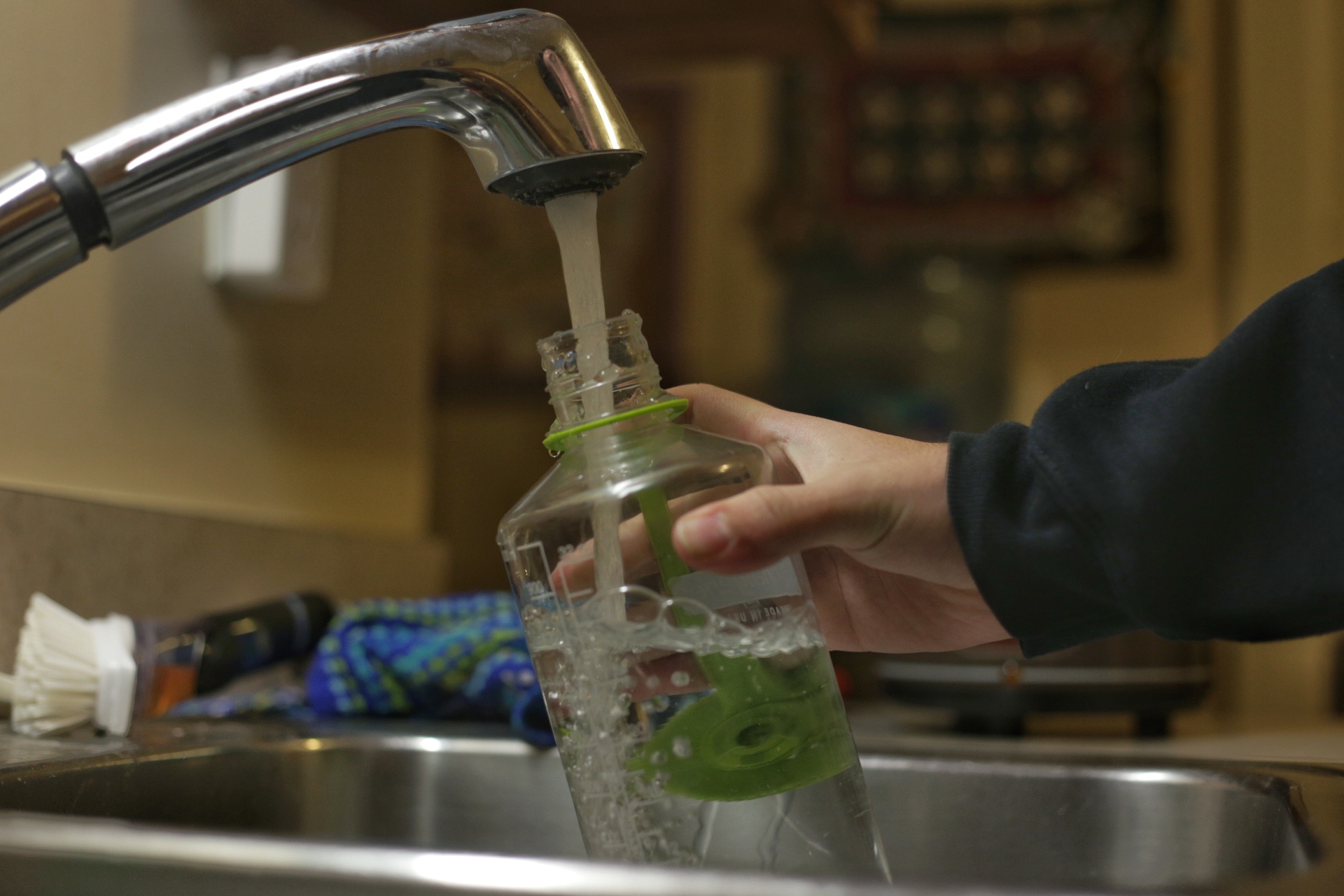In its annual sustainability report, The University of Maryland’s Office of Sustainability announced that visitors and members of the university community have prevented the disposal of nearly 3 million plastic water bottles over a three-year period by refilling their bottles with filtered water from filling stations around the campus.
The 103 electronic water bottle filling stations on the campus, sponsored by the Office of Sustainability through the Terps Heart The Tap program, have saved exactly 2,933,087 water bottles from disposal since the stations were installed. This updated number was determined after the office calculated 2015-16 totals in July, according to Aynsley Toews, a project manager at the Office of Sustainability. The office calculates the total number of bottles saved on an annual basis.
“I think these stations have a wonderful impact on the campus community,” Toews said. “We have prevented so many plastic water bottles from ending up in landfills, and the goal is to one day have them in every building if possible.”
Every summer since the first water bottle filling stations were installed on the campus in 2013, student interns for the Office of Sustainability go around to each station — which are all equipped with a counter — and add up the total amount of plastic water bottles saved.
Bottle filling station use has increased an average of 660 percent annually over the past three years, according to the 2016 report.
The jump in numbers between 2014 and 2015 can be attributed to the increase in the amount of water bottle filling stations installed, Toews said. But these stations aren’t cheap.
The first batch of filling stations, which was installed in 2013, was funded by a $62,282 Sustainability Fund grant that provides funding for projects that promote environmental sustainability and is supported by student fees. This grant led to the installation of 64 electronic water bottle filling stations, according to the university sustainability website. The second grant from the fund awarded $44,200 for the installation of 36 more water filling stations in 2014.
When purchased in bulk, each station costs about $800, not including installation, which can range from $200 to $2,000 depending on the complexity of the installation. Each filling station also requires about two replacement filters each year, costing about $50 each, Toews said. However, this total does not include costs for damages induced by general wear and tear, she added.
For many students on the campus, refilling their water bottles at these filling stations has become a common part of their routine.
“I bring my reusable water bottle with me everywhere,” said Jessica Fischberg, a junior journalism major who refills her reusable water bottle at least once a day. She added that the stations are a good incentive for students to be more sustainable.
“When I visit other universities I can’t even find a recycling bin let alone water bottle filling stations,” said Samantha Bingaman, a senior environmental science and policy major. “But at Maryland, I see a lot of the students carrying around reusable water bottles and refilling them at the stations. This entire campus is dedicated to improving sustainability, which is so rare.”
In 2013, Facilities Management estimated there were 3,000 to 4,000 water fountains on the campus, Toews said, but her goal is to turn all of them into water bottle filling stations.
She added that a proposal for a third grant from the Sustainability Fund was recently sent to the sustainability council for the installation of 85 new water bottle filling stations to replace water fountains.
“So many requests come from faculty and students for more [stations] and we want to keep up with the demand,” Toews said. “We have the water bottle filling stations in the most trafficked buildings on campus, but we are now looking to expand them to all buildings.”
Bingaman, who is an undergraduate student representative on the sustainability council, said the council has received the proposal and if approved, it will be announced by the end of the semester.
“It takes three times more water to produce the plastic water bottle container than what it actually holds, it is a huge consumer of oil and they end up in landfills more often than they should,” Bingaman said. “It would be great if we could have more water fountains replaced with this new snazzy technology.”



